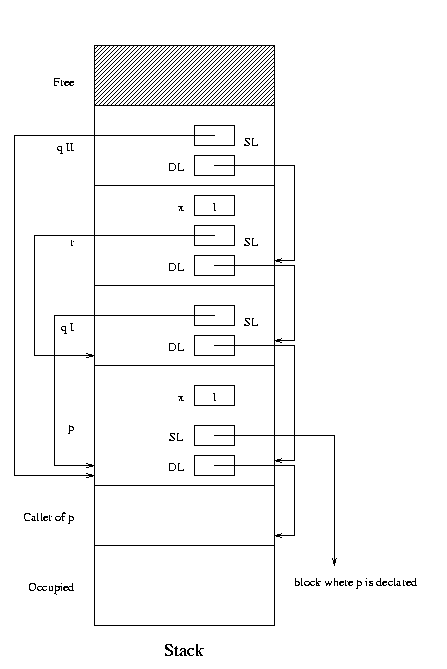Spring 2002, CSE 428: Solution of Assignment 3
Note: In this solution, the stack is drawn as growing bottom-up. If
you have adopted the opposite convention, it's not a problem.
Exercise 1
At the moment in which the string
"returning the result of fibo(1)" is printed there are
four activation records for fibo present
on the stack (there had been five activated in total, but
the call of fibo(2) has generated no recursive calls and its
activation record has been removed
before the allocation for the call of fibo(1) (called by
fibo(3)).
The following drawing illustrates the situation.
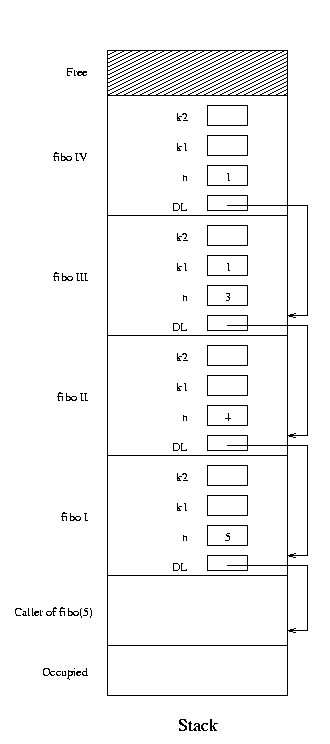
Exercise 2
-
Since l goes out of scope the
object to which it was pointing (namely the object
of class list containing only the field
first), and the three objects of class element (the whole list)
that are pointed by first, are left as memory leaks.
No dangling pointers.
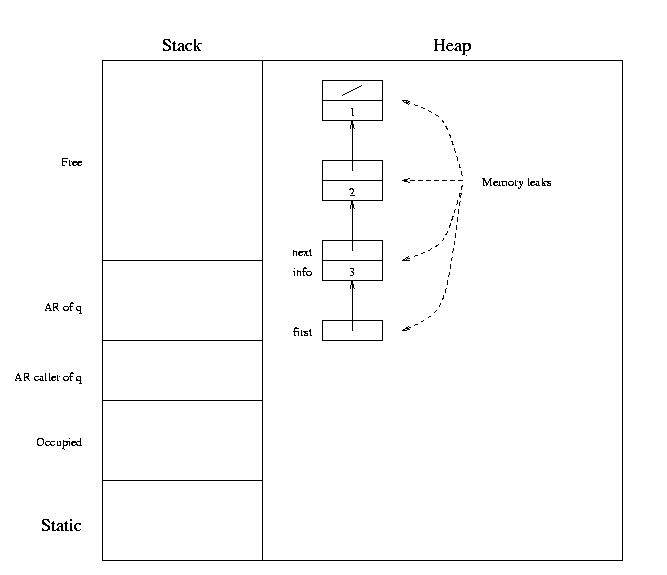
-
Since the l of p() is returned
and its value is held by the l of q(), there are
no memory leaks.
There are no dangling pointers either.
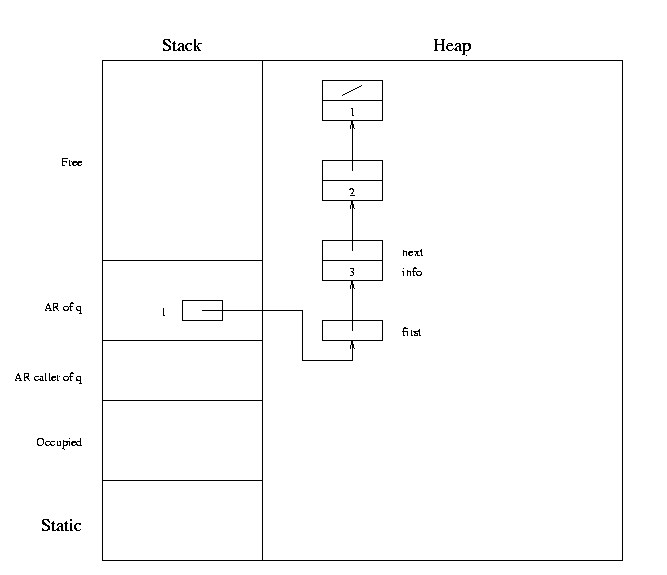
-
Since there is no destructor method in list, when l is
deleted only the
object of class list (containing the field first)
is returned to the free list, the elements of the list
become memory leaks.
Furthermore, l becomes a dangling pointer.
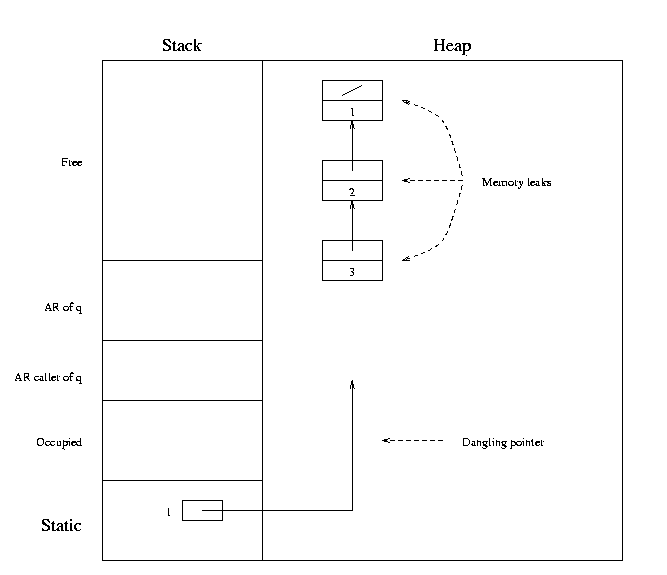
- This case is similar to the previous one, but now l is
local to p(), hence it goes out of scope when p()
returns, and thus it is not a dangling pointer.
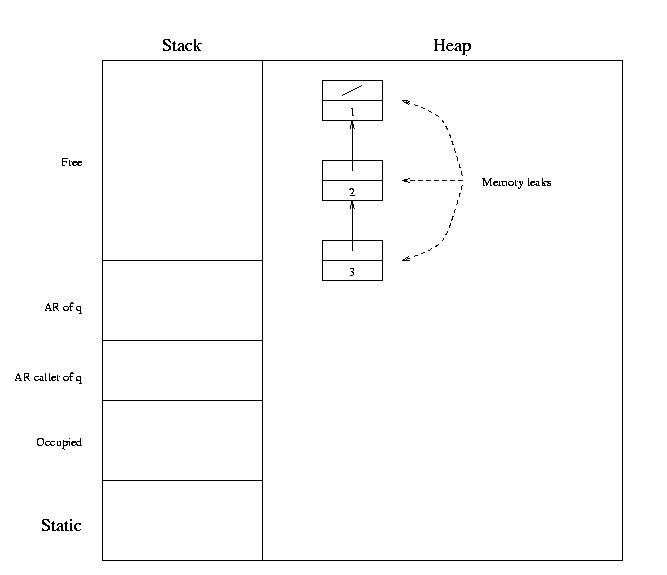
-
This case is similar to the previous one, but now the destructor
method of the classes list and element ensures
that the elements of the
list are deleted as well. Thus there is no memory leak.
And, like in previous case, there are no dangling pointers either.
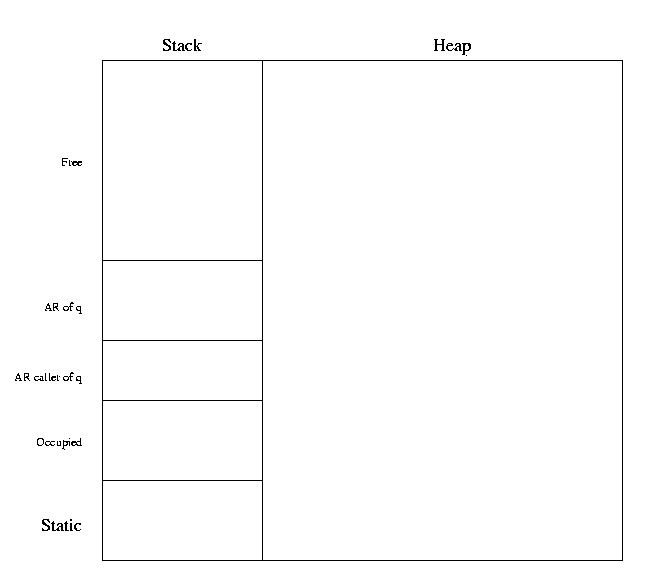
Exercise 3
-
- static scope: the values printed are 2,1
- dynamic scope: the values printed are 2,0
-
The following drawing illustrates the situation on the stack at the
moment in which the second value is printed, in the case of static scope.
